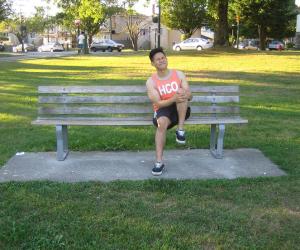When it comes to distal femoral growth plate injury, this is typically a fracture involving the growth plate in the femur at the end of the bone of the knee joint. This type of injury usually occurs mostly among children and adolescents.
Symptoms
The indications of a growth plate injury to the distal femur typically include soreness in and the area directly over the knee joint after a sustaining a direct force to the affected knee or when force is placed over the thigh area. The individual will experience difficulty in bending or straightening the knee and pain occurs when the knee is moved. There is tenderness around the thigh bone that can be felt along with rapid swelling. The affected knee usually appears deformed and there is a distinct difference in the leg length that was not apparent before.

Possible causes
The growth plates are situated at the ends of the long bones such as the femur. It is the area in which growth occurs in the bone and the last area of the bone to fully harden and turn from cartilage into bone. Due to this, injuries to the growth plates typically occur among children and adolescents while the bone is still relatively soft.
At a young age, this form of fracture is more likely to occur than soft tissue damage such as ligament injuries as the ligaments are stronger than the bone. Among adults, the soft tissue is more likely to tear before a fracture occurs.
It is important to note that growth plate fractures tend to occur from direct force to the knee or being subjected to a cutting type of force on the bone in the thigh. In either manner, it is straight distress and a damage that causes immediate swelling and pain.
Treatment
It is vital to seek immediate medical attention. To learn to recognize and manage this bone injuries, enroll in a course on first aid today. An X-ray will be taken in order to confirm a diagnosis and the extent of the fracture sustained by the individual. Depending on the age of the individual, a CT scan or MRI will be taken since cartilage is not clearly seen on an X-ray.
The treatment depends on the extent of the fracture and if there are any displaced bones present. The minor fractures might only require casting in order to immobilize the knee joint for 4-6 weeks. The fractures where the bones are displaced would require mobilization either manually or through surgery. A cast is then applied so that the bone will heal in place. In harsh cases, an area of bone is immobilized during surgical procedure. After the immobilization phase, the individual should perform exercises in order to restore full movement, balance and strength.
